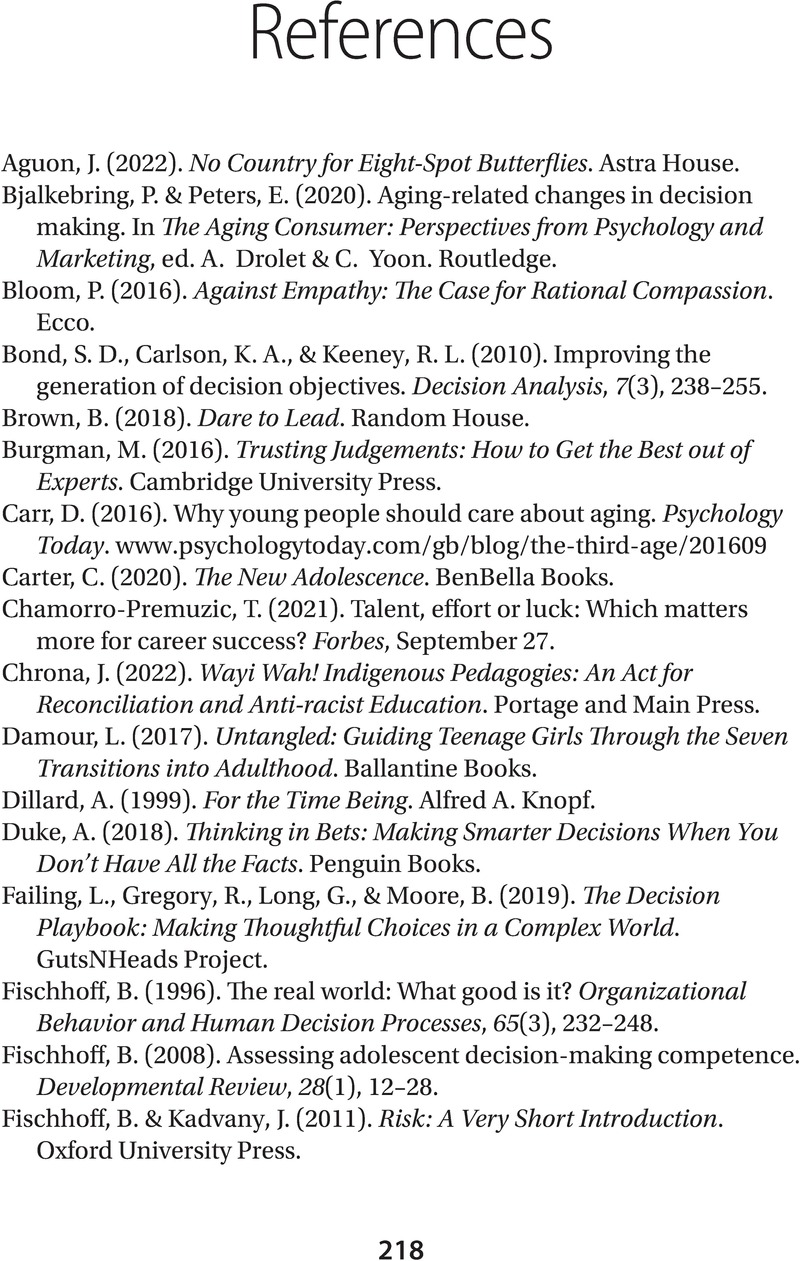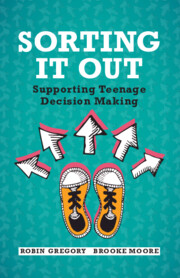Book contents
- Sorting It Out
- Sorting It Out
- Copyright page
- Dedication
- Contents
- Territory Acknowledgment
- About This Book
- Introduction to the Decision-Maker Moves: The Big Picture
- 1 Move 1: Frame the Decision
- 2 Move 2: Clarify What Matters
- 3 Move 3: Generate Options
- 4 Move 4: Explore Consequences
- 5 Move 5: Weigh Trade-offs and Decide
- 6 Move 6: Stay Curious and Adjust
- Now What?
- Acknowledgments
- Glossary
- References
- Index
- References
References
Published online by Cambridge University Press: 18 January 2024
- Sorting It Out
- Sorting It Out
- Copyright page
- Dedication
- Contents
- Territory Acknowledgment
- About This Book
- Introduction to the Decision-Maker Moves: The Big Picture
- 1 Move 1: Frame the Decision
- 2 Move 2: Clarify What Matters
- 3 Move 3: Generate Options
- 4 Move 4: Explore Consequences
- 5 Move 5: Weigh Trade-offs and Decide
- 6 Move 6: Stay Curious and Adjust
- Now What?
- Acknowledgments
- Glossary
- References
- Index
- References
Summary

- Type
- Chapter
- Information
- Sorting It OutSupporting Teenage Decision Making, pp. 218 - 221Publisher: Cambridge University PressPrint publication year: 2024
References
References
An interview with Paul Slovic about ideas from the book Numbers and Nerves can be seen on the Arithmetic of Compassion website: www.arithmeticofcompassion.org/blog/2021/2/15/a-morning-show-interview-with-paul-slovic
If you don’t have time to read Kahneman’s impressive book Thinking, Fast and Slow, check out the quick summaries on YouTube: www.youtube.com/watch?v=9ivtvPVkFkw (two-minute summary); www.youtube.com/watch?v=uqXVAo7dVRU (ten-minute summary)



